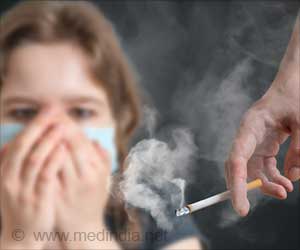Researchers of the Max Planck Institute for Chemistry and Yale University discovered that tobacco smoke off-gassing from prior exposure transports contaminants equal to several cigarettes of secondhand smoke.

‘More closed or less well-ventilated spaces like a motor vehicle, a bar, a small room in a home have higher concentrations of pollutants and harmful chemicals.’
Read More..




Smoking restrictions have decreased non-smokers' exposure to secondhand smoke. Yet with worldwide smoking rates at 22%, exposure to hazardous pollutants from tobacco smoke remains a major risk for non-smokers, and THS has been identified as a major exposure pathway. Read More..
Thirdhand smoke includes residual nicotine and multiple other chemicals left on surfaces like clothes, walls, skin or furniture. Desorption from these surfaces results in airborne chemicals that present significant health risks to non-smokers. This serious public health hazard hasn´t been fully understood yet.
The paper is significant since studies on THS-related VOCs in non-smoking environments do not exist and while THS transport to non-smoking sites has been proposed theoretically, no studies have yet observed or quantified the active transport and emission from people into non-smoking environments.
"In real-world conditions, we see concentrated emissions of hazardous gases coming from groups of people who were previously exposed to tobacco smoke as they enter a non-smoking location with strict regulations against indoor smoking.
So the idea that someone is protected from the potential health effects of cigarette smoke because they're not directly exposed to second-hand smoke is not the case", says Drew Gentner, Associate Professor of Chemical & Environmental Engineering at Yale University and Alexander von Humboldt Foundation Research Fellow.
Advertisement
The gas emissions were equivalent to that of 1-10 cigarettes of secondhand smoke in a one-hour period. A much larger range of compounds originating from cigarette smoke were observed with offline measurements of gases and aerosols. "Based on the measurements, we conclude that humans transport THS into indoor areas via their clothing and bodies.
The conclusions derived from this study are generalizable to other, less well-ventilated locations. "The observed emission rates into a more confined or less well-ventilated space such as a motor vehicle, a bar, a train, or a small room in a home would lead to much higher concentrations and occupant exposure", Gentner explains.
Source-Eurekalert










